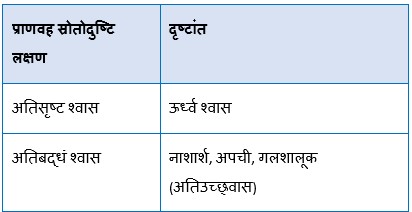A critical review of Prana Vayu and its correlation with contemporary science
DOI:
https://doi.org/10.21760/jaims.9.6.29Keywords:
Tridosha, Prana Vayu, Srotas, Neurophysiology, Cranial nerves, Basal gangliaAbstract
Tridosha Siddhanta stands high as Vata, Pitta and Kapha are the three biological humors, present in the bodies which are responsible for the maintenance of homeostasis. Vata dosha is the most important factor of Tridosha which is responsible for controlling all types of movements. Prana Vayu, one of the five Vata Doshas, travels via the Urah (thorax region) and Kantha (throat region) from its location in the head. It is reasonable for the processes of respiration, deglutition, eructation, sneezing, and spitting. It also keeps the heart, Hridaya (intelligence/judgment), and Chitta (mind) functioning properly. Hearing head refers to the brain and brain stem, which are in charge of all these processes. According to modern medical research, Prana Vayu performs all of the same roles. In general, the Prana Vata's functions can be related to those of the limbic system, cranial nerves, cerebral cortex, basal ganglia, and other components. Thus, it is easy for us to understand the fundamentals of Ayurveda, which is desperately needed in the modern world. In modern medicine, the majority of the Vatika illnesses treated in Ayurveda are classified as neurological disorders. There aren't many published publications on the intellectual aspects of Vata. An attempt has been made in this article to correlate the physiological activities of Prana Vayu, with a focus on neurophysiology.
Downloads
References
Upadhyay Yadunandan: Astanga hridaya, published by Chaukhmbha Sanskruta Samsthan, Varanasi, Fourteenth edition; Kaviraj Atridev Gupta Commentary (Vidhyotini) Sutrasthana-12/5: Pg.no.171.
Upadhyay Yadunandan: Astanga hridaya, published by Chaukhmbha Sanskruta Samsthan, Varanasi, Fourteenth edition; Kaviraj Atridev Gupta Commentary (Vidhyotini) Sutrasthana -12/4: Pg.no.171.
Sushruta. Sushruta Samhita Acharya Yadavji Trikamaji, editor. New Delhi: Chaukhambha Publications, Reprint: 2018, Nidanasthana- 1/13. Pg.no.453
Indu Khurana, Arushi Khurana, Narayan Gurukripa Kowlgi. Textbook of Medical Physiology. 3rd edition. Elsevier RELX India private limited. Functional Anatomy and general principles of functions of gastrointestinal system. 2021. Pg.no.524-525.
K. Sembulingam. Essentials of medical physiology. 6 th edition. Jaypee Brothers medical publishers. 1999. Respiratory system. Pg.no.677.
K. Sembulingam. Essentials of medical physiology. 6 th edition. Jaypee Brothers medical publishers. 1999.Digestive system. Pg.no.280.
Prof. Banawarilal Gaud, editor. Charaka Samhita (Composed by Maharshi Agnivesh and revised by Caraka and Dridhabala), Vol – 3, Cikitsasthana, 15/3, Rashtreeya Ayurveda Vidyapeetha: reprint, 2021; Pg.no.515.
Indu Khurana, Arushi Khurana, Narayan Gurukripa Kowlgi. Textbook of Medical Physiology. 3rd edition. Elsevier RELX India private limited. Gastrointestinal system. 2021. Pg.no.527.
K. Sembulingam. Essentials of medical physiology. 6 th edition. Jaypee Brothers medical publishers. 1999. Respiratory system. Pg.no.903.
K. Sembulingam. Essentials of medical physiology. 6 th edition. Jaypee Brothers medical publishers. 1999. Cardiovascular system. 588, Pg.no.606.
Dr. Brahmanand Tripathi: Sharangadhara Samhita by Acharya Sharangadhara, published by Chaukhambha Surbharati publication, Varanasi, Reprint 2021: Dipika Hindi Commentry, Purvakhanḍa -5/44-45: Pg.no.44.
Sushruta. Sushruta Samhita Acharya Yadavji Trikamaji, editor. New Delhi: Chaukhambha Publications, Reprint: 2018, Sharirasthana- 9/12. Pg.no.120.
Prof. Banawarilal Gaud, editor. Charaka Samhita (Composed by Maharshi Agnivesh and revised by Caraka and Dridhabala), Vol – 2, Vimanasthana-5/8, Rashtreeya Ayurveda Vidyapeetha: reprint, 2021; Pg.no.365.
Prof. Banawarilal Gaud, editor. Charaka Samhita (Composed by Maharshi Agnivesh and revised by Caraka and Dridhabala), Vol – 2, Vimanasthana-5/10, Rashtreeya Ayurveda Vidyapeetha: reprint, 2021; Pg.no.365.
Prof. Banawarilal Gaud, editor. Charaka Samhita (Composed by Maharshi Agnivesh and revised by Caraka and Dridhabala), Vol – 2, Vimanasthana-5/8, Rashtreeya Ayurveda Vidyapeetha: reprint, 2021; Pg.no.365.
Sushruta. Sushruta Samhita Acharya Yadavji Trikamaji, editor. New Delhi: Chaukhambha Publications, Reprint: 2018, Sharirasthana- 9/12. Pg.no.120.
Sushruta. Sushruta Samhita Acharya Yadavji Trikamaji, editor. New Delhi: Chaukhambha Publications, Reprint: 2018, Sutrasthana- 21/5. Pg.no.178.














